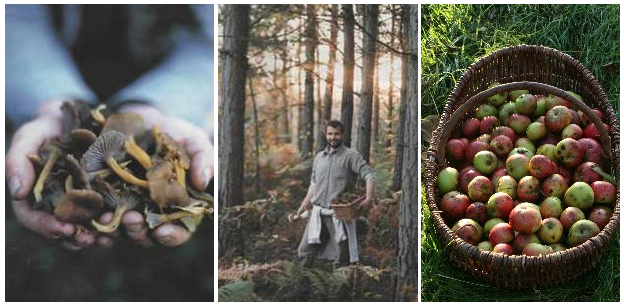We chat to Fergus Drennan, of fantastic foraging blog Wild Man Wild food, about eating frogspawn, living off the fat of the land and life as a hunter/gatherer.
How did you first start foraging?
I started foraging aged about four on Wimbledon Common in London in 1974, collecting dandelion leaves for my beloved pet tortoise.
How much of your daily diet is currently foraged?
As it’s still early spring, I’ve been enjoying the spring nettles, wild garlic, cleavers and chickweed, as well as wild harvested oysters and lots of lacto fermented wild greens – some of which I made over a year ago. But later this year I’ll be beginning a new project – to eat 100% wild/foraged for a whole year.
What has inspired you to attempt to spend a whole year living off foraged foodstuffs?
The biggest reward to trying to live 100% from the land is the sheer scale of learning that comes exploring the full wealth and potential of the wild foods in my local area, and the opportunity for creativity and connecting with the landscape, plants, and with other people interested in exploring the adventure and magic of eating wild foods.
What’s the weirdest thing you’ve ever eaten?
It’s hard to say, but has to be one of the following: Boiled fox tongues, squirrel milk, swan lungs, heart and liver on toast, frogspawn or the unlaid eggs of roadkill birds – you decide!
What’s a really fail-safe edible plant or berry for beginner foragers to find?
Nothing is ever fail-safe, but dandelion leaves, nettles, blackberries, wild apples, giant puffball fungi and members of the Agaricus genus of fungi are a good place to start. These are all relatively easy to identify with a bit of discrimination. A great way to start is with nettles – collect them and get cooking, fermenting, tea and drink making!
How hard is it to live off the land in the winter?
Where I live in the South East of England it’s not as hard as it would be in the wilds of Scotland. Your exact location is key. Being by the coast is very useful as it gives access to unique coastal plants, seaweeds and shellfish – and fish of course. If you eat wild animals and insects your nutritional needs will be more easily met too.
What’s easy to find on the sea shore, and what’s the best way to prepare it?
Seaweed is incredibly versatile though. Laver is great fried, fermented, dried and flaked for use as a seasoning or for use in bread, biscuits and pastry, boiled for soup, sauces or liquid seasoning, or used fresh as a wrap for cooking fish or other items as well as for producing homemade nori sheets for sushi.
